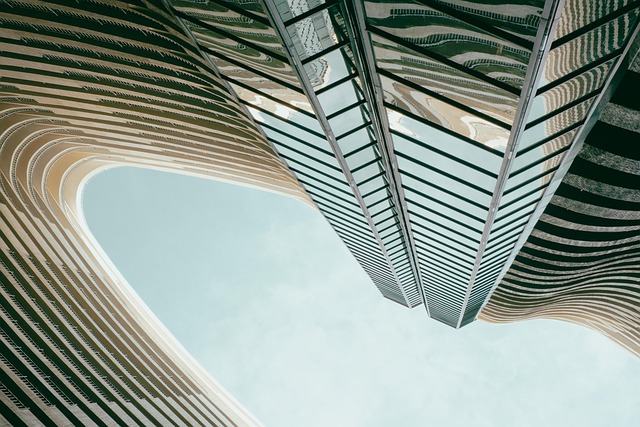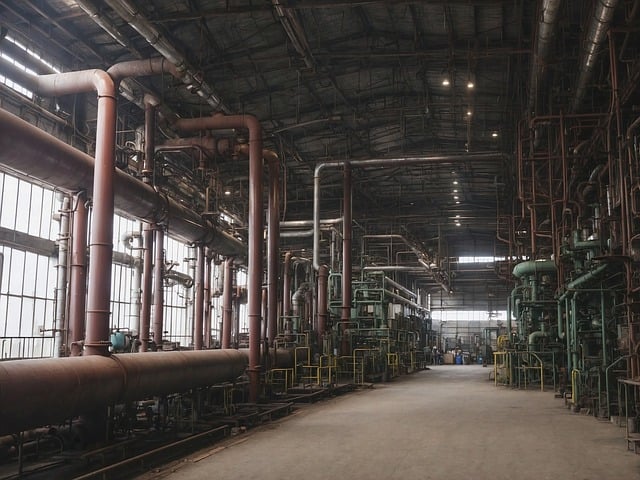Dallas Steel Frame Buildings: Quick Install, Enduring Structure

Dallas Steel Frame Buildings offer unparalleled strength, durability, and versatility for both resid…….
Welcome to an in-depth exploration of the innovative world of Dallas steel frame buildings, a construction concept that has captured the attention of architects, urban planners, and developers worldwide. This article aims to provide a comprehensive guide, delving into various facets of this groundbreaking approach to building design and construction. From its historical roots to its global impact and future prospects, we will unravel the significance of Dallas steel frame buildings and their role in shaping modern infrastructure. Prepare to embark on a journey through the steel-and-glass era of urban development.
Definition:
Dallas steel frame buildings refer to structural systems that utilize advanced steel framing techniques, combining high-strength steel components with glass and other modern materials. This architectural style is characterized by its sleek, minimalist aesthetics and efficient use of space.
Core Components:
Historical Context:
The concept of steel frame buildings has its roots in the late 19th century during the Industrial Revolution. As steel production techniques advanced, architects and engineers began to explore its potential in construction. The first modern steel-frame building, Chicago’s Home Insurance Building (1885), set a precedent for future skyscrapers. Fast forward to the 21st century, and Dallas steel frame buildings have evolved to become iconic symbols of modern urban development, blending aesthetics, functionality, and sustainability.
Significance:
Dallas steel frame buildings are not just architectural marvels; they represent a significant shift in construction methods and design philosophy. Here’s why:
International Influence:
Dallas steel frame buildings have left an indelible mark on the global construction landscape, inspiring and shaping architectural trends worldwide. Cities like New York, London, Hong Kong, and Singapore have embraced this concept, leading to a surge in tall, modern skyscrapers. The success of these structures has encouraged developers and architects to explore similar designs, adapting them to local climates and cultural contexts.
Regional Trends:
Market Dynamics:
The Dallas steel frame building market is dynamic and diverse, catering to various sectors, including office, retail, residential, and mixed-use developments. The global construction industry, valued at over $10 trillion in 2022, presents significant opportunities for this sector. According to a report by Grand View Research, the global steel framing market size was estimated at USD 3.5 billion in 2020 and is expected to expand at a CAGR of 8.5% from 2021 to 2028.
Investment Patterns:
Economic Impact:
Innovation in Materials:
Construction Technologies:
Digital Tools and Software:
Key Policies and Regulations:
Legislative Frameworks:
Main Challenges:
Proposed Solutions:
Case Study 1: The Pearl District, Portland, Oregon
This revitalized urban area features several Dallas steel frame buildings that have become iconic landmarks. The district’s transformation involved the careful integration of modern architecture with historic elements. One notable example is the The Morrison, a residential tower that blends sleek glass and steel design with green spaces, offering breathtaking views of the city. This project exemplifies successful urban renewal, attracting businesses and residents alike.
Case Study 2: Shanghai Tower, China
Standing at an astonishing height of 632 meters (2,073 feet), the Shanghai Tower is a testament to the potential of Dallas steel frame construction on a grand scale. Its Y-shaped design incorporates advanced structural systems, allowing for expansive glass facades and efficient floor plans. The tower’s success lies in its ability to balance aesthetics with functionality, creating a symbol of modern China.
Case Study 3: The Edge, Amsterdam
This innovative office building is designed to be energy positive, generating more energy than it consumes. It incorporates numerous sustainable features, including a green roof, rainwater harvesting, and advanced HVAC systems. The Edge showcases the potential of Dallas steel frame buildings in promoting environmentally responsible practices without compromising design or functionality.
Potential Growth Areas:
Emerging Trends:
Strategic Considerations:
Dallas steel frame buildings have emerged as a powerful force in shaping modern construction and urban development. Their efficiency, sustainability, and aesthetic appeal have captured the imagination of architects, developers, and urban planners worldwide. As technology advances and our understanding of structural engineering grows, these buildings will continue to evolve, addressing new challenges and opportunities.
The global impact of this concept is evident in the diverse range of cities embracing steel frame construction, each adapting it to their unique contexts. From the bustling streets of New York to the vibrant landscapes of Shanghai, these structures have become iconic symbols of urban progress. As we look towards the future, Dallas steel frame buildings are poised to play a pivotal role in creating sustainable, efficient, and livable cities worldwide.
Q: Are Dallas steel frame buildings safe during extreme weather conditions?
A: Advanced engineering techniques and materials ensure their structural integrity. Proper design and construction address concerns related to wind, rain, and snow loads, making them safe for occupants and visitors.
Q: How do these buildings impact local real estate markets?
A: Dallas steel frame buildings often act as catalysts for urban renewal, attracting businesses and residents, thereby stimulating local economies and increasing property values in the surrounding areas.
Q: Can steel frame construction be cost-effective in the long run?
A: While initial costs may be higher, energy efficiency, reduced maintenance, and longer structural lifespans make Dallas steel frame buildings a cost-effective choice over traditional methods.
Q: What role do they play in promoting sustainable urban development?
A: These buildings can significantly contribute to sustainability by incorporating green features, reducing carbon footprints, and efficiently utilizing space, thereby fostering environmentally friendly urban growth.
Q: How does modular construction benefit the construction process?
A: Modular construction streamlines building assembly, reduces on-site waste, and minimizes disruption to surrounding areas. It also allows for faster completion times and more complex design possibilities.

Dallas Steel Frame Buildings offer unparalleled strength, durability, and versatility for both resid…….

Dallas Steel Frame Buildings offer unparalleled customization for commercial spaces, from retail to…….

Dallas Steel Frame Buildings are transforming construction with their durable, cost-effective, and s…….

Dallas Steel Frame Buildings revolutionize city construction with visually stunning designs and stru…….